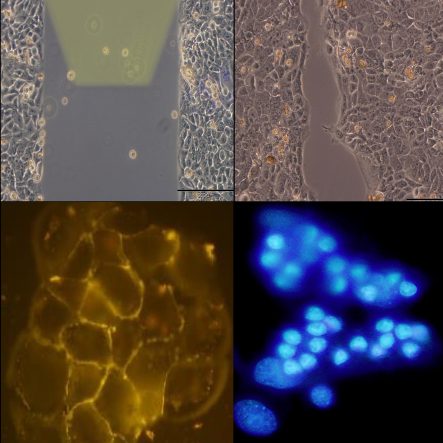Description of the activity
The possibility to control biological function using light provides groundbreaking opportunity in biology and medicine. Intracellular light actuators have several advantages compared to other approaches such as optogenetic, requiring genetic engineering to confer optical responsiveness to the desired cell type. The availability of an injectable device, fully integrated with the tissue, enabling optical control of the cell function may overcome not only cost and time-consuming genetic approaches, but also the issue of spatial and temporal resolution, invasiveness, stiffness and low compliance of the planar light actuators. Nanoparticles (NP) based on organic semiconductors represent valid alternatives, as being biocompatible, biodegradable, support electronic and ionic transport. We demonstrated that poly(3-hexylthiophene) P3HT nanoparticles elicit a behavioral response in the small invertebrate model Hydra vulgaris and induced the modulation of genes involved in the light transduction pathway. This pioneer work opened the path to current studies with diverse organic semiconductors, to dissect the mechanisms underlying the transduction of light into a biological response. By using biochemical and biomolecular tools we are studying the modulation of the redox balance, gene expression levels, and cell proliferation rates as effects of the photostimulation both in Hydra and in human keratynocytes and exploit the possibility to use this control of cell function to enhance tissue r

Involved personnel
A. Tino | C. Tortiglione | G. Tommasini
National and International Collaborations
CNR (ISOF – Institute of Organic Synthesis and Photoreactivity)
Center for Nano Science and Technology, Istituto Italiano di Tecnologia
University of Rzeszow (Institute of Biology and Biotechnology) , Poland
Instrumentation/facilities
Advanced laboratory for molecular biology: equipment for DNA, RNA and Protein analysis; Cell culturing, animal facilities, fluorescence microscopy. Chemi doc, quantitative real Time PCR (StepOne, Applied Biosystem), cryostat, Functional Live Cell Imaging facility, Ultracentrifuge. White Led source with collimated spot.
Active projects and contracts
Progetto: ERC Starting grant 2018; Funder: European Research Council. Title: LINCE: Light INduced Cell control by Exogenous organic semiconductors. Activity period: 2019-2024 (GA 808631). Principal investigator: M.R. Antognazza. ISASI responsible : C.Tortiglione.
